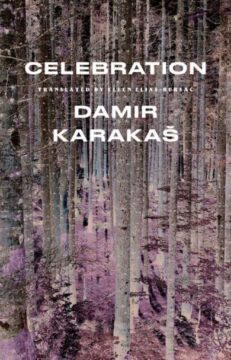Cory Oldweiler at the LARB:
 ABOUT TWO HOURS south of the grandiose architectural amalgam that is Zagreb lies the equally impressive natural wonder of Plitvice Lakes National Park, a network of waterfalls and lakes serenely carving its way through the lush limestone plain. The park, at the northeastern edge of Croatia’s largest and least-populated county, Lika-Senj, is one of the most popular tourist attractions in the region, and also the site of the first casualties of the succession of Balkan wars in the aftermath of Yugoslavia’s disintegration in the 1990s.
ABOUT TWO HOURS south of the grandiose architectural amalgam that is Zagreb lies the equally impressive natural wonder of Plitvice Lakes National Park, a network of waterfalls and lakes serenely carving its way through the lush limestone plain. The park, at the northeastern edge of Croatia’s largest and least-populated county, Lika-Senj, is one of the most popular tourist attractions in the region, and also the site of the first casualties of the succession of Balkan wars in the aftermath of Yugoslavia’s disintegration in the 1990s.
Lika-Senj, and indeed much of the region, had been on edge for almost a year when, on Easter Sunday, March 31, 1991, a group of rebellious Serbian forces ambushed a bus full of Croatian police officers sent to reassert control of Plitvice. Two men were killed in the shoot-out—one Serb and one Croat—and seven weeks later, the Croatians took a page from the Slovenians and overwhelmingly voted to secede from Yugoslavia. Implementation of the independence declaration was delayed until October, in a futile attempt to avert escalation of the conflict, but by the following year, the half-century experiment that was Yugoslavia remained in name only, as the lingering union between Serbia and Montenegro.
more here.
Enjoying the content on 3QD? Help keep us going by donating now.
